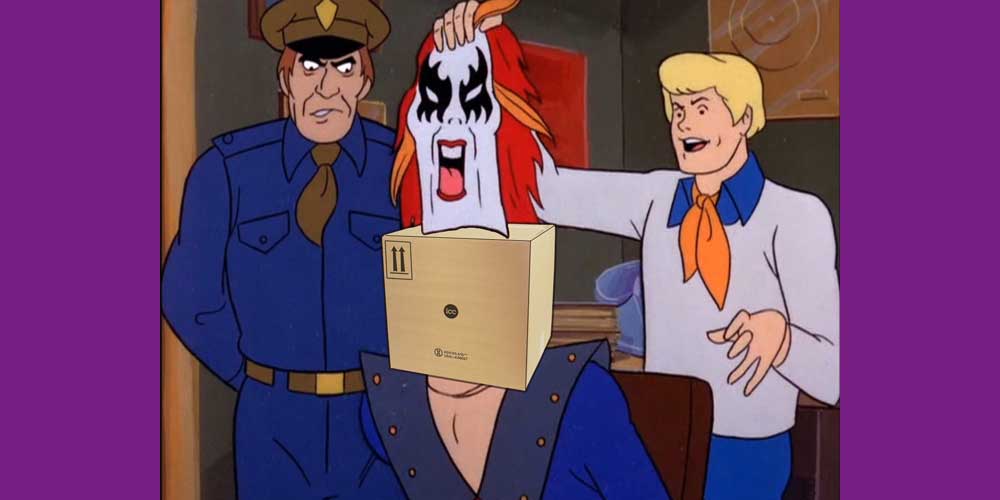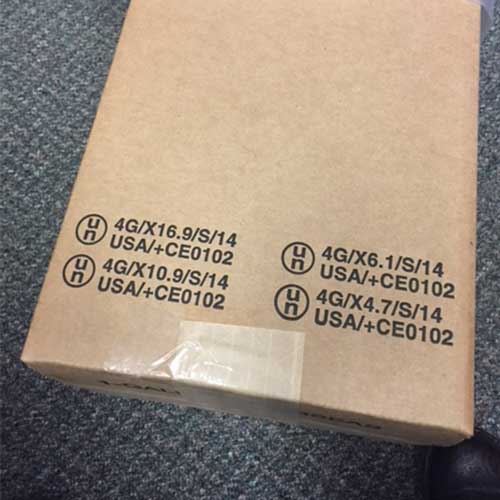
We Got a Mystery to Solve
One of my favorite childhood shows was “Scooby-Doo, Where Are You?”. How he and his group of friends could solve all those crazy hauntings and monsters always amazed me. Nothing made me happier than when the culprit was discovered and he uttered the words, “If it weren’t for you pesky kids, I would have gotten away with it.” After all I was only a kid and catching the bad guys was a big deal.
Occasionally during a training class odd questions or little mysteries arise. In those times I can feel like Thelma from my childhood show tracking down the clues and getting an answer. Here is one from one mystery from a recent training. It came about after our discussion on United Nations (UN) Specification Packaging. We had just finished reviewing all the parts of the packaging codes and discussing the manufacturer’s packing instructions as they apply to 49 CFR – US ground regulations. This lead to talking about their actual facility. Below is a picture of a box they have on site for use. They wanted to know if it was in compliance.
Ah, a mystery I can solve.

In case you didn’t catch why they asked about this particular box and compliance, take a look at the FOUR package specification codes on the box. For most boxes, there is only one code derived from the UN testing performed on the box. My company only ships liquid materials that are Class 3 flammables, Class 8 corrosives, and some Class 9 Marine Pollutants by ground within the United States.
Here are the clues needed to determine compliance:
- Determine what each code represents.
- All codes shown represent a fiberboard box that is rated to all packing group standards because of the “X”. For this company, it is used as a combination packaging. Each code presented a maximum gross weight allowed for the package – 16.9, 10.9, 6.1 or 4.7 kilograms. The package was manufactured in 2014. It was made and certified in the United States by an outside testing group. Interestingly enough, none of the codes had a “V” representing this package is a variation packaging.
- Find the manufacturer’s packing instruction for specific package information.
- Per 49 CFR 178.2(c), notification must be given by the manufacturer with information on how to assemble the box, which inner packagings to use, the closure requirements, etc. My company gave me a notebook with all of the results from the testing on the design, but no clear notification or packing instruction from the manufacturer of the box. They didn’t have as required in Section 173.22(a)(4)(ii). This is a problem.
- Review the 49 CFR regulations.
- For my company’s types of materials and sizes, combination packaging with metal cans and/or plastic bottles inside a fiberboard outer box are allowed.
- As to the multiple codes being present, 49 CFR tells us in 178.3(c), “where a packaging conforms to more than one UN standard or DOT specification, the packaging may bear more than one marking, provided the packaging meets all the requirements of each standard or specification.” However, my concern was the extra codes on the box would be viewed as incorrect or confusing. I did note that this section has a letter of interpretation available. This letter (10-0154) agrees with me and suggested that the “non-applicable marking should be covered or obliterated during transportation.” You can read the full letter here.
So, as a “pesky kid” my job was to tell this company all of this. Overall, the box was fine to use, but they should cross out the codes they are not following for each package they ship using this box. They also needed to track down and have on hand the manufacturer’s “notification” of the requirements for that particular package. I believe this will help them when packaging their materials for shipment.
Call ICC today. For all of your training needs, we can provide a quote for our various training options and tell you when we will next be offering some classes at our Houston, TX, Niagara Falls, NY, Toronto, ON, and Montreal, QC locations. We also have Specialists on hand to help you with your packaging questions and needs.






Nice article! Nice job!
I see what you’re saying, William. When working with this company my comments were not an actual review of their procedures or a review from a DOT inspector standpoint.
While not mentioned in the blog explicitly there was a tab in the notebook provided to me regarding closure instructions but each page in that section pertained to different inners. For someone like me just briefly looking, it wouldn’t be clear to me what to use.
Since this company had been using the box for several months, they understood the setup of the binder and where to find information. As to keeping the instructions for 90 days, this notebook is maintained with all of the shipping paper files so essentially, they meet that requirement.
I agree, there is a better way to do manage this notebook and the situation. My recommendation at the end of the blog was to contact the manufacture and have the instructions presented in a better way. This box was chosen over variation packaging by the company for reasons not explained to me.